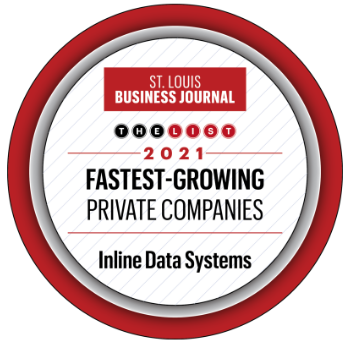Whether you need to or want to, there will probably come a time when you’ll be in the market for a new customer relationship management system. You might even be putting the decision off for as long as possible due to uncertainty or stress about the move.
Can changing CRM systems be difficult?
Yes.
Does it have to be?
No way!
We’ve helped 70+ extended home and auto warranty companies make the move to Inline and learned a lot in the process. Here are our insider tips and fool-proof process to make your CRM migration a breeze.
The First Thing to Do When Migrating CRMs: Plan Ahead
Just like Rome wasn’t built in a day, switching to another CRM can take some time; realistically about two months.
There are multiple reasons, but the two most important are:
- Your data:
- The amount
- The integrity
- The complexity
- The number of vendors you partner with requiring integration
What You Can Do: We recommend involving everyone who will be involved in the decision-making and migration process from the very beginning. This includes key salespeople, accountants and customer support staff.
Here’s why: Doing so means you’ll be better prepared because expectations and responsibilities can be delegated. Inline’s standard operating procedure is to have at least one of our engineers as part of these discussions to answer in-depth questions and give specific recommendations based on your current setup and future plans.
Step Two: Gather Your Data — All of It
This might be the most crucial of all the steps because every CRM migration looks different. No doubt you have data that’s categorized to your specifications or (ideally) captured more completely and accurately than your competition.
After all, that’s the whole point of using a CRM, right?
So, you’ll want to start gathering — and we’ll want to receive — every last bit of data: from the very first item you logged to your up-to-the-millisecond entry.
There is one little caveat, though.
What You Should Do: Weed out any information that you know is irrelevant moving forward, duplicate or flat-out incorrect.
Here’s Why: Time is of the essence and you don’t want to waste any of it. The first thing we’ll want you to send is the first round of that all-essential lifeblood of the sales process: Your data. The more complete the picture, the better. The sooner we receive your data, the better. The more accurate, the best.
When you send your data in its most finalized form, we’ll import it and a run a report to validate its accuracy and compatibility with our CRM.
Don’t worry, though! We’ll troubleshoot any incongruencies and get it formatted the way you need.
Practice. Train. Repeat (For a Week).
“How do I…?”
“Where’s the…?
“When can I…”
You don’t want to ask those questions when it actually matters. And since practice makes perfect, you’ll want to start perfecting your familiarity with your new CRM as soon as possible.
What You Should Do: The moment your team gain access, make it mandatory that they begin learning the areas and functionality specific to their role:
- Sales agents should sell, sell, sell.
- Customer service reps should practice modifying policies.
- Finance should run sales reports.
Here’s Why: You know your “Go Live Date.” It’s one of the first things we discuss during discovery calls with our clients. That’s why we reserve the week leading up to it for you to train and practice so there are as few flubs as possible during your moment of truth.
Above All: Be Patient and Positive
We’d love to say that your first day or even week of using your new CRM will be flawless… but we can’t.
At the very least, something minor won’t work exactly as intended. People will feel a little unsure about what to do or how to do it, even after practicing. You might even begin to question if you made the right decision.
What You Should Do: Remember that you are in control of your launch. Everyone — especially managers — should be flexible and supportive during that initial adjustment period.
Here’s Why: Keeping a positive mindset during those formative hours or days is key for buy in. Panicking won’t improve anything, and hard as it might be, you need to realize that switching to a new CRM is just like anything else: It gets easier over time.
Besides, Inline Data Systems will be there day of launch and after to answer any questions, provide real-time support and most importantly, do it all with a calming smile.
CRM Migration Magic
See? Moving to a new CRM isn’t that intimidating when you know what to expect.
Even better, you can get a jump on migrating to Inline CRM right now for free!
Contact us and you’ll get full access to a test environment so you’re prepared to hit the ground running from the start.





